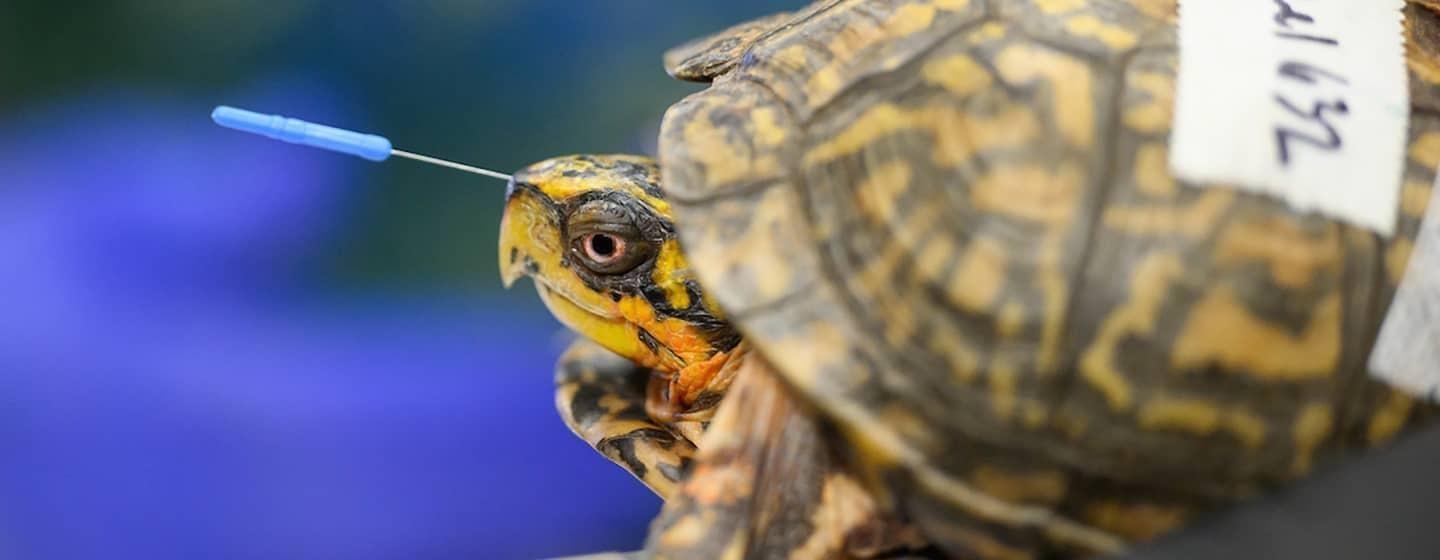Ancient Medicine Treats an Even Older Species


Acupuncture and box turtles are two things you probably wouldn’t think work well together.
After all, that shell poses a challenge.
But it turns out the ancient form of medicine and the even older species of reptile can work well together!
First though, a little history.
Acupuncture is a key component of traditional Chinese medicine.
Chinese Emperor Huangdi is credited with discovering the practice around 2500 BC. However, the first real evidence that some form of acupuncture was practiced in China appears with the discovery of bronze needles for the procedure. Those are dated to the Zhou dynasty around 800 BC.
Acupuncture involves the insertion of very thin needles through the skin at strategic points on your body. Those points are called meridians. Think of them as key nerve center points or the intersections of nerve pathways. There are 361 meridians on the human body.
The patient in this story is an eastern box turtle.
The oldest fossilized box turtles were found in Nebraska and date to about 15 million years ago.
And turtles haven’t changed much. Box turtles are native to North America and the common box turtle is the most widely distributed species. Eastern box turtles are a subspecies and are found near ponds, fields, meadows, and woodlands throughout the eastern half of the United States.
“It’s not easy being a turtle in a growing state like North Carolina because development is shrinking habitat and roads are dividing it,” said Tara Harrison, associate professor of Veterinary Medicine at NC State, “Lawnmower and cars are some of the biggest threats to box turtles.”
And that’s where acupuncture fits it.
The two turtle patients in this story were hit by cars. NC State veterinarians repaired the shells, but the turtles’ lack of appetite and movement indicated the creatures were in a great deal of pain. Harrison, who has studied veterinary acupuncture and used the procedure to treat exotic animals in zoos, was asked to help.
“It takes a lot of patience to work with turtles because they can withdraw every limb into that shell,” laughs Harrison. “But the limbs eventually come back out and expose the meridians or the central nerve locations. You just need to work around the shell.”
Acupuncture practitioners view the ancient medicine as a drug free method to either ease pain or stimulate appetite. The procedure is performed one or two times per week for one month and veterinarians utilize the same needles that are used on humans.
“The challenge with veterinary acupuncture is that patients can’t tell you if the treatment helps, you need to observe behavior and then make assumptions,” adds Harrison.
After a few weeks, the turtles did seem to be moving a bit more (It is a turtle after all) and they were eating better. But the question remains, did the acupuncture help or was it the body naturally healing itself? Critics of acupuncture maintain there is no scientific proof the procedure is effective.
“That’s always the question with acupuncture,” admits Harrison, who says in humans there is also the debate over the placebo effect, in which improvements can’t be attributed to the properties of the treatment itself and must therefore be due to the patient’s belief in the treatment. “I just know I see improvements and that is what matters.”